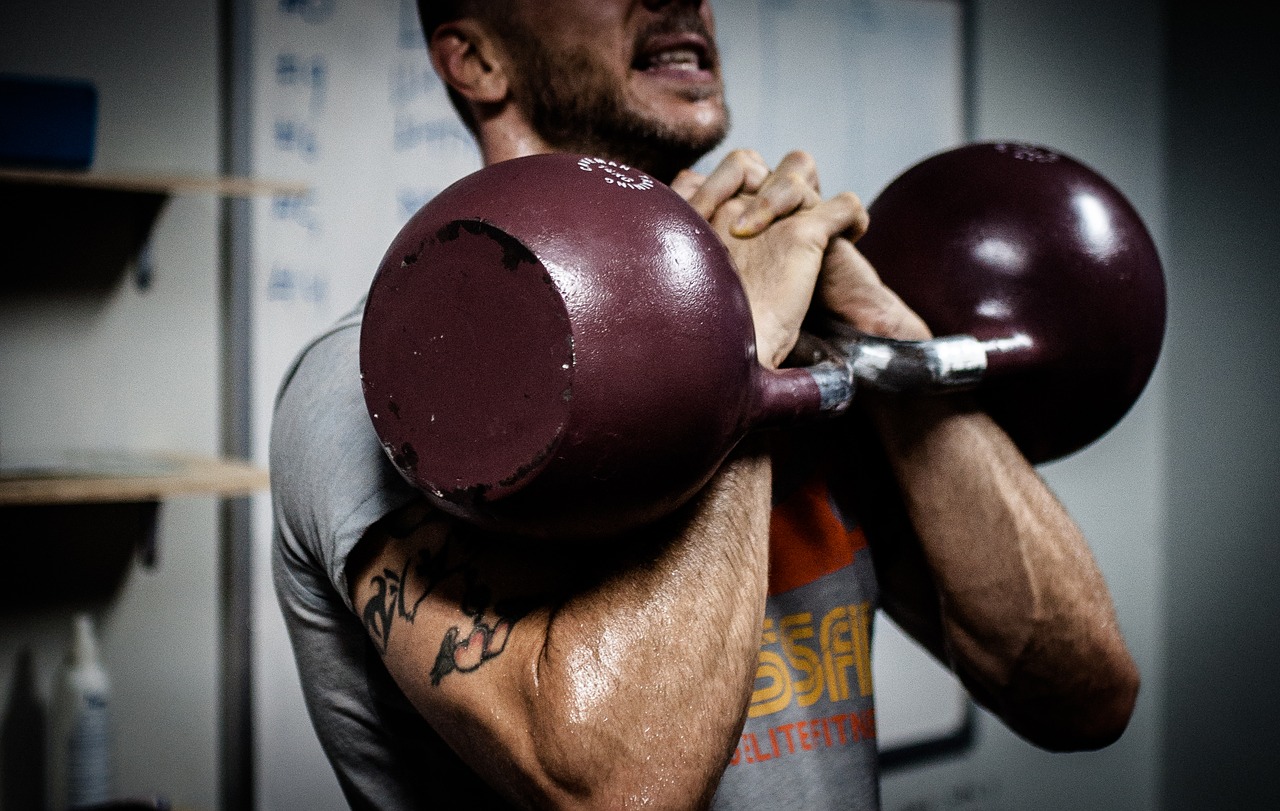My genetics put all my muscle in my butt and my quads, and for the longest time it seemed I was doomed to have low mass is my upper body and in particular my shoulders. Nothing I did could make them any bigger or stronger, or so I thought until I learned the inescapable fact: the overhead press is better with a kettlebell.
When comparing dumbbells and kettlebells most people defer to “kettlebells are better for conditioning and explosive movements” and leave it at that. But while I wouldn’t argue that kettlebells are always better — we can all agree it’s better to curl a dumbbell — the overhead press is something that is plain better with the kettlebell.
Editor’s note: This article is an op-ed. The views expressed herein and in the video are the author’s and don’t necessarily reflect the views of BarBend. Claims, assertions, opinions, and quotes have been sourced exclusively by the author.
1. More back recruitment
The overhead press isn’t just a shoulder exercise, of course. It’s also super effective at building your whole upper back and with the kettlebell’s load dangling down your forearm, it demands more stability, postural control, and back recruitment. The body is simply forced to push through the lift harder and the feeling in the upper back is completely different.
A few weeks of KB OHPs and there was a noticeable increase in mass and in overall muscle activation in my upper back, which of course has carryover to a huge variety of other exercises. My coach always told me to pause at the bottom of the dumbbell and barbell OHP to properly engage my upper back. No matter what I did, it was and is far, far easier to engage those muscles with the kettlebell.
[What about barbells? Read our comparison of barbell, dumbbell, and kettlebell thrusters here.]
2. Better scapular health
People tend to perform dumbbell presses in what’s called the “high five position” with the arms out to the side whereas kettlebell presses naturally align to the plane of the scapula, about 30 to 45 degrees anterior to the frontal plane. This means better scapular health and a less stress on the ball and socket in your shoulder.
Can you dumbbell press in the plane of the scapula? Sure, but it happens much more naturally with the kettlebell — it’s the default way to lift them. Not so with the dumbbell.
[Learn more: 10 exercises for strong, healthy scaps (and why it matters)]
3. The rack position
Simply holding the kettlebell in the rack requires more tension then with the dumbbell. That contributes to the previous point that KB OHPs are better for building your back, but a strong rack position will have more carry over to other lifts, including your lagging bench press, and do a better job of contributing to your posture.
It’s true that it’s harder to do progressive overload with KBs than DBs simply because you’re unlikely to find a huge variety of incremental weight increases with KBs. For that reason, it pays to include some barbell or dumbbell pressing in your routine as well.
But for all the reasons listed above, kettlebell overhead presses should be a fundamental component of your shoulder training.


